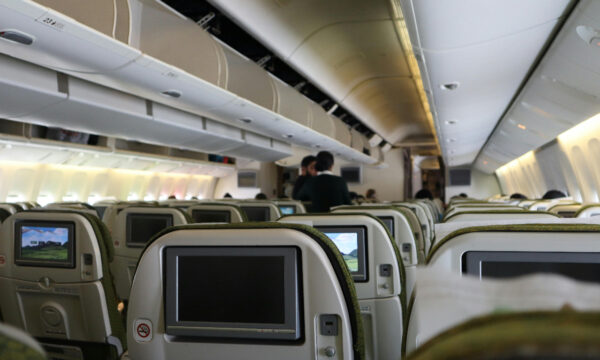How to stay connected to the internet while traveling

Traveling opens doors to adventure, but it also presents a challenge: staying connected to the digital world. Whether you’re navigating a foreign city, catching up on work, or posting vacation photos, reliable internet access is essential. Let’s dive into ways to stay connected while traveling, blending practical strategies with some surprising tips you might not have considered.
1. Understand Your Connectivity Needs
Before anything else, ask yourself: Why do I need internet access? Casual browsing differs from streaming videos or conducting business calls. If you work with digital faxing, it requires a minimum amount of traffic. Those who are ready to install the fax app now will not spend more than 10 MB on transferring 100 pages of documents. The downside is streaming, watching videos, TikTok – they spend gigabytes of memory per day. Knowing your needs helps you prioritise data plans, device settings, and connection quality.
2. Public Wi-Fi: Friend or Foe?
Public Wi-Fi hotspots are ubiquitous in airports, hotels, cafes, and libraries. While convenient, they can be risky. Cybersecurity experts warn that 30% of travellers fall victim to cyberattacks on unsecured public networks.
Tips for safe usage:
- Use a virtual private network (VPN). A VPN encrypts your data, shielding you from potential hackers.
- Avoid accessing sensitive information, such as banking or passwords, while connected to public networks.
For added reliability, download offline maps and guides before your trip. Google Maps, for example, lets you save entire regions for offline use.
3. Invest in an International SIM Card
International SIM cards are lifesavers for globetrotters who need uninterrupted access. Providers like Airalo, OneSimCard, and Flexiroam offer flexible plans, often cheaper than roaming with your current carrier.
With an international SIM card:
- You can use local data at reduced rates.
- You bypass the hassle of hunting for free Wi-Fi.
However, if your trip spans multiple countries, ensure the SIM supports all regions in your itinerary.
4. Mobile Hotspots: Your Pocket-Sized Solution
Portable Wi-Fi hotspots have become increasingly popular, especially for group travellers. These compact devices provide reliable internet access, often supporting multiple connections simultaneously.
Key benefits:
- No need to rely on public Wi-Fi.
- Consistent speeds ideal for remote work.
A quick note: Check the device’s battery life and coverage area before purchasing or renting one. Popular brands like Skyroam and GlocalMe have robust global plans, ensuring seamless connectivity.
5. eSIM Technology: The Future of Connectivity
If you own a modern smartphone, eSIM (embedded SIM) might be the answer. This digital SIM card doesn’t require a physical swap. With a few clicks, you can activate local data plans tailored to your destination.
Why choose eSIM?
- Instant activation upon arrival.
- Competitive rates in most countries.
By 2024, experts estimate 40% of global smartphone users will adopt eSIM for travel, highlighting its growing relevance.
6. Offline Solutions: The Backup Plan
While online connectivity is the goal, preparing for offline moments is wise.
Recommendations:
- Download apps like TripIt for itinerary management.
- Save essential documents (e.g., tickets, hotel confirmations) offline.
- Use offline language translators for communication hiccups.
Offline planning not only ensures smoother travels but also saves precious data.
7. Leverage Airline and Hotel Wi-Fi
Airlines and hotels increasingly offer complimentary or premium Wi-Fi services. Delta Airlines, for example, announced free Wi-Fi for SkyMiles members on most domestic flights. Similarly, luxury hotel chains often include high-speed internet in their packages.
Pro tip:
Enroll in loyalty programs to access perks like free Wi-Fi upgrades or extended bandwidth. Even budget accommodations occasionally provide reliable connections, though speeds can vary widely.
8. Balance Cost and Convenience
Budget-conscious travellers often face the dilemma: pay for premium connectivity or rely on free options? Striking a balance is crucial.
- Use free Wi-Fi strategically: download large files or apps during breaks.
- Opt for prepaid data plans instead of pay-as-you-go models, as the latter can rack up unexpected costs.
9. Stay Informed About Regional Restrictions
Some countries impose internet restrictions, blocking platforms like Google, Facebook, or WhatsApp. If traveling to such destinations (e.g., China or Iran), a reliable VPN becomes indispensable.
Additionally, be aware of local laws. In some areas, using VPNs might be restricted or require government approval.
10. Don’t Forget Power Management
All the connectivity tips in the world won’t help if your devices run out of juice. Invest in a portable power bank and carry universal adapters for international sockets.
Modern power banks can charge smartphones multiple times over, ensuring you stay online even in remote regions.
11. Crowdsource Advice from Fellow Travellers
Lastly, tap into travel forums, Reddit communities, or social media groups. Fellow travellers often share invaluable insights, from the best SIM card providers to hidden cafes with excellent Wi-Fi.
Websites like NomadList rank cities based on digital nomad-friendliness, factoring in Wi-Fi speeds, safety, and cost of living.
The Ultimate Goal: Seamless Connectivity
Staying connected while traveling is about blending preparation with adaptability. By understanding your needs, embracing technology, and being mindful of potential challenges, you can navigate the world without losing touch with your digital life.
Whether it’s uploading a sunset photo or checking flight details, staying online has never been easier – or more essential. Safe travels, and happy browsing.
The editorial unit
























Facebook
Twitter
Instagram
YouTube
RSS